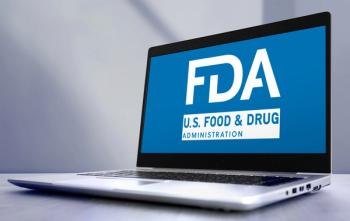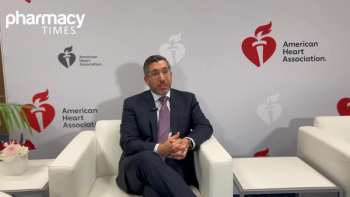
- February 2022
- Volume 88
- Issue 2
Point-of-Care Drug Information Resources Are Critical
Pharmacists can use these toolkits to answer questions and make clinical designs for medication therapy management services.
Pharmacists are drug information experts, so having resources right at the point of care for medication therapy management (MTM) services is critical to ensure the most accurate and up-to-date information is disseminated.
The FDA approved 50 new drugs in 2021.1 This highlights the vast amount of drug information for which pharmacists must keep up-to-date, making it vital for clinicians to know where to find the best information to provide the best clinical decisions and improve patient health outcomes. Pharmacists offer the following drug information MTM services: creating education resources; providing medical information to caregivers, other health care professionals, and patients; and responding to drug information requests.2
Dutch publishing company Wolters Kluwer has developed an electronic clinical drug information MTM toolkit to assist with services.3 This paid resource consists of integrated drug databases, Facts and Comparisons, Lexicomp, and Medi-Span.3 Medi-Span provides OTC and prescription drug data that include the drug name and pricing, national drug code, strength, and therapeutic class.3 Medical condition and allergy picklist files have data sets available to reduce errors when items are selected from drop-down menus. Also, patient safety programs assist with identifying which medications may need increased monitoring, display morphine equivalent dosing to avoid adverse drug events, include tall-man lettered drug names for implementing safety checks, and provide black box warnings.3 Additionally, the toolkit assists pharmacists with the following MTM services: defining Medicare Part B and Part D drug coverage to identify eligible patients; determining chronic conditions defined by the Centers for Medicare & Medicaid Services, identifying drug costs required to treat Medicare Part B–eligible patients with chronic diseases, and supporting comprehensive medication reviews and patient education.
There are many useful interactive applications for pharmacists that can provide information on screenings that patients need based on their age, medical conditions, and risk factors. Additionally, vaccine apps provide detailed information right at the point of care to ensure adolescents, adults, and children are up-to-date on their immunizations. Evidence shows that other vaccination rates among pediatric patients declined during the COVID-19 pandemic, and it is important for clinicians to use mobile health tools to ensure individuals catch
up with their immunizations.4 Pharmacists can access free immunization information through the CDC Vaccine Schedules app, which includes adolescent and adult immunization schedule by age group and medical conditions, child vaccine schedule with immunization recommendations from birth to aged 18 years, catch-up schedule for children and teens aged 4 months to 18 years, and related vaccine ref- erences and resources.5 The PneumoRecs VaxAdvisor is a free resource available on Android and iOS devices that provides patient-specific pneumococcal vaccine recommendations based on an individual’s age, immunization history, and underlying medical conditions.6
The US Preventive Services Task Force’s free app contains screening and patient counseling information based on its recommendations, and it is available for Android and iOS devices.7 Additionally, clinicians can search by specific patient characteristics, such as age, behavioral risk factors, and gender, and recommended screenings will be provided at the point of care.7
The American College of Cardiology developed the atherosclerotic cardiovascular disease (ASCVD) Risk Estimator Plus free app to estimate a patient’s 10-year ASCVD risk, and it is available on Android and iOS devices.8
Jennifer Gershman, PharmD, CPh, PACS, is a drug information pharmacist and Pharmacy Times® contributor who resides in South Florida.
References
1. Novel drug approvals for 2021. FDA. Updated January 6, 2022. Accessed
January 13, 2022. https://www.fda.gov/drugs/ new-drugs-fda-cders-new-molecular-enti- ties-and-new-therapeutic-biological-products/novel-drug-approvals-2021
2. Ghaibi S, Ipema H, Gabay M; American Society of Health System Pharmacists. ASHP guidelines on the pharmacist’s role in providing drug information. Am J Health Syst Pharm. 2015;72(7):573-577. doi:10.2146/sp150002
3. Medication therapy management: Medi-Span supports MTM services. Wolters Kluwer. Accessed December 11, 2021. https:// www.wolterskluwer.com/en/solutions/medi-span/how-we-help/medication-therapy-management
4. Patel Murthy B, Zell E, Kirtland K, et al. Impact of the COVID-19 pandemic on administration of selected routine childhood and adolescent vaccinations - 10 U.S. jurisdictions, March-September 2020. MMWR Morb Mortal Wkly Rep. 2021;70(23):840-845. doi:10.15585/mmwr.mm7023a2
5. Vaccine schedules app. CDC. Updated February 23, 2021. Accessed December 11, 2021. https://www.cdc.gov/vaccines/schedules/hcp/schedule-app.html
6. PneumoRecs VaxAdvisor mobile app for vaccine providers. CDC. Updated December 14, 2018. Accessed December 11, 2021. https://www.cdc.gov/vaccines/vpd/pneumo/hcp/pneumoapp.html
7. USPSTF recommendations app for web and mobile devices. US Preventive Services Task Force. Accessed December 11, 2021. https://www.uspreventiveservicestaskforce.org/apps/
8. ASCVD risk estimator plus. American College of Cardiology. Accessed December 11, 2021. https://tools.acc.org/ascvd-risk-estimator-plus/#!/calculate/estimate/
9. Alps Pharmacy. Accessed December 11, 2021. http://alpspharmacy.multimediadeploy. com/
Articles in this issue
over 3 years ago
OTC Cases: February 2022over 3 years ago
Interactive Case Studies: February 2022over 3 years ago
Be Aware of Age-Related Mix-Ups of COVID-19 Vaccinesover 3 years ago
Korsuva From Cara Therapeutics and Vifor Pharmaover 3 years ago
OTC Product News: February 2022over 3 years ago
Minnesota Fights Back Against Rising Insulin Costsover 3 years ago
Pharmacist’s Role Is Key in Counseling Patientsalmost 4 years ago
Generic Product News: February 2022almost 4 years ago
Maintaining Oral Health Is Essential to Well-BeingNewsletter
Stay informed on drug updates, treatment guidelines, and pharmacy practice trends—subscribe to Pharmacy Times for weekly clinical insights.















































































































































































































